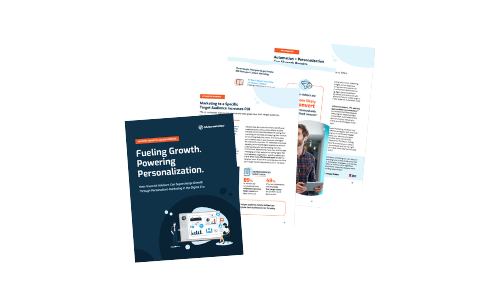We’ve talked about how to write your financial advisor biography and how to make it engaging, but are you including these must-have elements that take your bio to the next level?
While there are many resources online with long lists of everything they think you need to include, we’re sharing our own tried-and-true elements you absolutely need to include in your bio in order to take it to that next level and resonate with your ideal client.
Read on to learn why your website needs a financial advisor biography and the four must-have elements of any good site bio.
Why Your Website Needs a Biography
Your biography is your introduction to the world (and prospects). It will often be the first impression you make to a potential client. While biographies can traditionally read like resumes back in the 90s and early 00s, people today want to get to know the person they are working with.
This doesn’t mean you need to write your life story in your biography; however, you should always answer the following questions:
- Who are you?
- What do you do?
- Why would potential clients choose you?
While these questions may seem painfully basic, we’ve seen far too many financial advisors who simply wade so deep into a singular aspect that their bio doesn’t answer these simple questions.
For example, biographies that are heavy on the jargon or include buzzwords that financial advisors think their clients want to hear or know-it-all phrases that make them sound like they’re compensating for a lack of knowledge.
To eradicate people from yawning or rolling their eyes, you need to write a biography that’s personalized and lets your accomplishments speak for themselves. That’s why we’re digging into 4-must have elements of any great biography.
4 Must-Haves To Include In Your Financial Advisor Biography
1. Introduce Yourself In First Person
When writing a bio, a lot of people will revert to the third person (i.e., Johnson graduated from Harvard). While this is great for an About Us page, a website bio can pack a much more powerful punch when using first-person language (i.e., I graduated from Harvard).
There are a few reasons why you should write in first-person, including:
- It’s More Personal – When we read something in the third person, it tends to feel like we’re reading something written by someone else. When using first-person, it reads like you are sharing your story with the reader, giving them a peek at both your personality and accomplishments.
- It’s Conversational – A third-person account can feel like a story, which is great for certain platforms. However, a first-person biography draws the reader into a conversation. This conversational technique can make the reader feel like they’re having a dialogue with you even though they’re actually just reading about you.
- You’ll Make A Connection – At the end of the day, your goal is to motivate prospects to want to work with you. By writing your bio in the first person, people are more likely to appreciate your personal anecdotes, especially if they were written with your target audience in mind.
- It’s More Natural – You don’t talk about yourself in the third person when you’re networking in person, so why should your biography be in the third person?
2. Build Trust Through Personalization
In order to build trust, visitors need to not only know who you are but also feel like they are in the right place. When writing your bio, think about your ideal client and what they would need to read or what imagery they would need to see in order to make them feel like you are the right choice for them.
You can personalize your bio in the following areas:
- Your Headshot – When your bio is doing the hard work of making your first impression with a potential client, including a photo of yourself is a great way to build trust. However, before you upload your favourite photo, ask yourself what your ideal client would prefer to see? Is it a professional headshot, or a photo of yourself in a more comfortable setting, like a living room or coffee shop?
- Your Copy – There are the basic elements that you should include in your bio, however, what key terms and phrases would most attract your ideal client? What would make them feel seen and understood by you, building trust before that first interaction even takes place? Not only that, but will they admire a more professional tone, or prefer something that’s more conversational?
- Additional Imagery – When it comes to standing out against the competition, you might want to add some personal elements into your bio, if you feel that your target audience would appreciate it. This could include a photograph of your family, a group photo of your employees, a pet, or a hobby that you enjoy doing.
- Contact Information – You’ll want to include contact information either below your bio or somewhere on your About Us page. When deciding on what points of contact are most important, think about the channels that your target audience is spending most of their time on. Perhaps it’s your email and phone number but also a specific social media channel that you know your ideal client is active on.
3. Length Matters
We’ll start by pointing out that there’s no one-size-fits-all methodology when it comes to the right length for your biography. The main factor when deciding on the length of your bio is considering who it is that you’re trying to attract.
If you go too short, you’ll have a more difficult time conveying who you are, your industry focus, educational background, experience and any other notable attributes you would like to include. However, if you go too long, you run the risk of your bio being skimmed or skipped altogether.
Ask your existing clients for their input. How did they feel about the length - was it too long or too short? Was there anything that stood out to them or anything that they felt was missing?
By collecting this information, you can use it to help determine the perfect bio length for your ideal client.
4. Don’t Forget About SEO
SEO may sometimes feel like a buzzword, but it’s still relevant to consider when creating or editing the copy in your biography and when optimizing your headshots and other imagery you include.
When incorporating SEO in your biography, it’s important to consider:
- Your Keywords – There are a number of free tools available to help you narrow down which keywords or phrases you should include to attract your ideal client. A great free resource to start with is Google Ads Keyword Planner. Include a few keywords throughout your bio in a natural, easy-to-read way.
- Avoid Keyword Stuffing – A major issue with SEO is that people think that more is better. This often results in stuffing, or filling a page or post up with a ton of keywords. This practice used to get people higher up in search results (the whole point of SEO); however, search engines have caught onto this practice and will penalize those who do it now, making those pages appear much lower on the search engine results page.
- Optimize Your Imagery - When uploading your imagery, make sure that the file sizes aren’t too large or that your website has a plug-in that automatically resizes files to a smaller size. Too many large files on your webpage can impact loading times, and a webpage that takes longer to load negatively affects your SEO. Also, add alt text to your images. This not only helps your SEO but also makes your site more accessible.
- Write For A Human Reader First, Not Bots – SEO works by search engine crawlers finding and recognizing phrases to index the page in their search results. While it can be tempting to write phrases exactly as presented in a keyword search, your copy still needs to be popular with the humans reading it, not bots.
Key Takeaways
In order to take your financial advisor biography to the next level, you will need to include the following elements:
- Introduce yourself in first-person language
- Build trust through personalization
- Write with the correct length for your target audience in mind
- Consider the elements you can include for SEO
By applying these elements when writing or updating your biography, you’ll be ready to rank higher in search engine results, find more prospective leads and connect with clients like never before.







